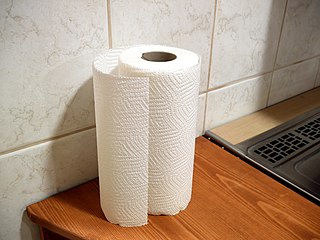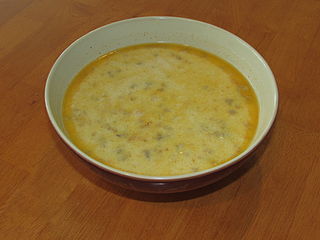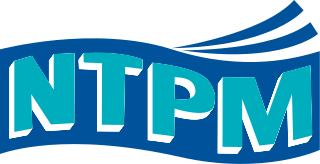
Toilet paper is a tissue paper product primarily used to clean the anus and surrounding region of feces, and to clean the external genitalia and perineal area of urine.

A towel is a piece of absorbent cloth or paper used for drying or wiping a surface. Towels draw moisture through direct contact.

Kimberly-Clark Corporation is an American multinational personal care corporation that produces mostly paper-based consumer products. The company manufactures sanitary paper products and surgical & medical instruments. Kimberly-Clark brand name products include Kleenex facial tissue, Kotex feminine hygiene products, Cottonelle, Scott and Andrex toilet paper, Wypall utility wipes, KimWipes scientific cleaning wipes and Huggies disposable diapers and baby wipes.

A handkerchief is a form of a kerchief or bandanna, typically a hemmed square of thin fabric which can be carried in the pocket or handbag for personal hygiene purposes such as wiping one's hands or face, or blowing one's nose. A handkerchief is also sometimes used as a purely decorative accessory in the breast pocket of a suit; it can then be called a pocket square. A handkerchief is also an important accessory in many folk-dances in many regions like the Balkans and the Middle East; an example of a folk-dance featuring handkerchiefs is the Greek Kalamatianós.

The Codex Leicester is a collection of scientific writings by Leonardo da Vinci. The codex is named after Thomas Coke, Earl of Leicester, who purchased it in 1717. The codex provides an insight into the inquiring mind of the definitive Renaissance artist, scientist and thinker, as well as an exceptional illustration of the link between art and science and the creativity of the scientific process.

A paper towel is an absorbent, disposable towel made from paper. In Britain, paper towels for kitchen use are also known as kitchen rolls, kitchen paper, or kitchen towels. For home use, paper towels are usually sold in a roll of perforated sheets, but some are sold in stacks of pre-cut and pre-folded layers for use in paper-towel dispensers. Unlike cloth towels, paper towels are disposable and intended to be used only once. Paper towels absorb water because they are loosely woven, which enables water to travel between the fibers, even against gravity. They have similar purposes to conventional towels, such as drying hands, wiping windows and other surfaces, dusting, and cleaning up spills. Paper towel dispensers are commonly used in toilet facilities shared by many people, as they are often considered more hygienic than hot-air hand dryers or shared cloth towels.

A menstrual pad, or simply a pad, is an absorbent item worn by women in their underwear when menstruating, bleeding after giving birth, recovering from gynecologic surgery, experiencing a miscarriage or abortion, or in any other situation where it is necessary to absorb a flow of blood from the vagina. A menstrual pad is a type of menstrual hygiene product that is worn externally, unlike tampons and menstrual cups, which are worn inside the vagina. Pads are generally changed by being stripped off the pants and panties, taking out the old pad, sticking the new one on the inside of the panties and pulling them back on. Pads are recommended to be changed every 3–4 hours to avoid certain bacteria that can fester in blood; this time also may differ depending on the kind worn, flow, and the time it is worn.

Feminine hygiene products are personal care products used during menstruation, vaginal discharge, and other bodily functions related to the vulva and vagina. Products that are used during menstruation may also be called menstrual hygiene products, including menstrual pads, tampons, pantyliners, menstrual cups, menstrual sponges and period panties. Feminine hygiene products also include products meant to cleanse the vulva or vagina, such as douches, feminine wipes, and soap.
Jonathan Routh, born John Reginald Surdeval Routh, co-starred in the British version of the television show Candid Camera (1960–67) and co-starred with Germaine Greer and Kenny Everett in a later attempt at a revival, Nice Time (1968). He published a number of humorous books, and also painted for many years.

Tissue paper or simply tissue is a lightweight paper or, light crêpe paper. Tissue can be made from recycled paper pulp on a paper machine.

A wet wipe, also known as a wet towel, moist towelette, disposable wipe, disinfecting wipe, or a baby wipe is a small to medium-sized moistened piece of plastic or cloth that either comes folded and individually wrapped for convenience or, in the case of dispensers, as a large roll with individual wipes that can be torn off. Wet wipes are used for cleaning purposes like personal hygiene and household cleaning; each is a separate product depending on the chemicals added and medical or office cleaning wipes are not intended for skin hygiene.

Table manners are the rules of etiquette used while eating, which may also include the use of utensils. Different cultures observe different rules for table manners. Each family or group sets its own standards for how strictly these rules are to be followed.

A napkin holder is a device used to hold napkins. A napkin holder can be made from virtually any solid material and is built so that the napkins do not slip from its hold, either by way of sandwiching them between two surfaces, or simply enclosing them on their sides in a horizontal design. Napkin holders range in price and styles from wooden designs to wrought iron or ceramic styles and many others. One iteration of the napkin holder, better known as a napkin dispenser, offers additional functionality with its design: folded napkins are enclosed in a snug metal casing, allowing users to retrieve a single napkin each time they reach into the container; this particular device is usually found in restaurants, diners, and other public eateries, while its simpler—often more aesthetically pleasing—counterpart, the holder, is common to households and classrooms. There is also an item which holds a napkin or serviette in a button hole or the top of a conventional necktie knot. It is conjectured as a clamp for the corner of a napkin and an hook which hooks into the top of the tie knot. They are most usually in sterling silver and date back to at least Edwardian times. Hence often to be found in antique outlets as functional collectors items. Certain "gentleman's clubs" include a button hole in a corner of their napkins for direct coupling to an upper shirt button.
gDiapers are a hybrid diaper, so users can choose to use either a cloth insert or a disposable insert that can be flushed or composted. Co-founders are Jason and Kimberley Graham-Nye. gDiapers began being sold in 2004. gDiapers are licensed from Kuver Designs Pty Ltd, Tasmania, "Eenee designs" diapers.
A napkin or serviette is a rectangle of cloth or paper used for wiping the mouth or fingers while eating.

The portrait of a man in red chalk in the Royal Library of Turin is widely, though not universally, accepted as a self-portrait of Leonardo da Vinci. It is thought that Leonardo da Vinci drew this self-portrait at about the age of 60. The portrait has been extensively reproduced and has become an iconic representation of Leonardo as a polymath or "Renaissance Man". Despite this, some historians and scholars disagree as to the true identity of the sitter.

Arunachalam Muruganantham (Padman) is a social entrepreneur from Coimbatore in Tamil Nadu, India. He is the inventor of a low-cost sanitary pad-making machine and is credited for innovating grassroots mechanisms for generating awareness about traditional unhygienic practices around menstruation in rural India. His mini-machines, which can manufacture sanitary pads for less than a third of the cost of commercial pads, have been installed in 23 of the 29 states of India in rural areas. He is currently planning to expand the production of these machines to 106 nations. The movie Period. End of Sentence. won the Academy Award for Best Documentary for the year 2018. The 2018 Hindi film Pad Man was made on his invention, where he was portrayed by Akshay Kumar.

A bag is a common tool in the form of a non-rigid container, typically made of cloth, leather, paper or plastic. The use of bags predates recorded history, with the earliest bags being lengths of animal skin, cotton, or woven plant fibers, folded up at the edges and secured in that shape with strings of the same material. Bags can be used to carry items such as personal belongings, groceries, and other objects. They comes in various shapes and sizes, often equipped with handles or straps for easier carrying.

Zuppa toscana is a broad term, literally meaning "Tuscan soup", though in Italy it is called "minestra di pane" meaning "bread soup". Though there can be many variations on the same Italian food, and though there are certainly many variations under the umbrella of the term 'zuppa toscana,' classic zuppa toscana’s main ingredients are cannellini beans, potatoes, and kale. A North American version, popularized by Olive Garden and made with Italian sausage, crushed red pepper, diced white onion, bacon, garlic puree, chicken bouillon, heavy cream, potatoes, and kale is richer than the original.

Nibong Tebal Paper Mill Holdings Bhd. is a Malaysian multinational pulp and paper and consumer goods company and is one of the world's largest paper manufacturer. Headquartered in Nibong Tebal, Penang, the company produces more than 100 types of tissue papers and has a capacity to produce 250 tons of tissue paper per day. Nibong Tebal Paper Mill has a strong presence not only in Malaysia, but also in Singapore, Indonesia, Thailand, and Vietnam.


















